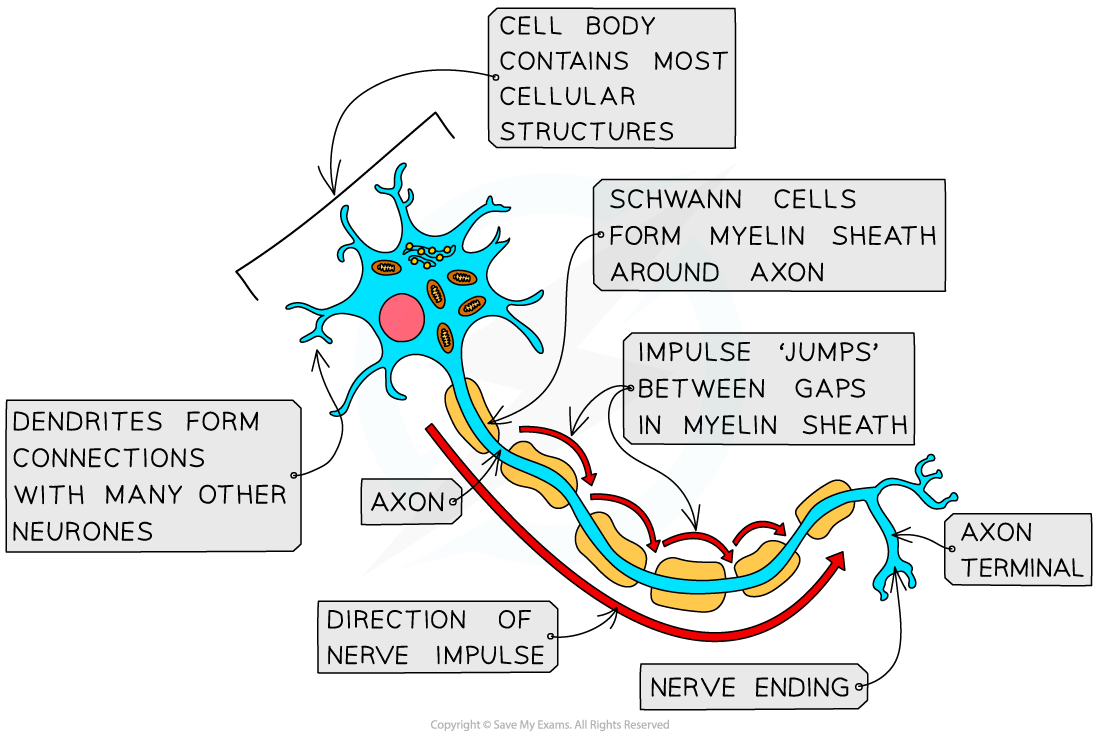Neurones (OCR A Level Biology) : Revision Note
Neurones
Neurones are specialised cells of the nervous system which carry electrical impulses around the body
A bundle of neurones is known as a nerve
There are different types of neurones
The following features are found in all types of neurone
Neurones have a long fibre known as an axon
They have a cell body that contains the nucleus and other cellular structures
The end of the axon, known as the axon terminal, contains many nerve endings
The nerve endings at the axon terminal allow neurones to connect to many other neurones which receive impulses from the axon terminals; this forms a network for easy communication
Some neurones are myelinated, their axon is insulated by a myelin sheath with small uninsulated sections along its length (called nodes of Ranvier)
The myelin sheath is formed by specialised cells known as Schwann cells which wrap themselves around the axon.
This means that electrical impulses do not travel down the whole axon, but jump from one node to the next so that less time is wasted transferring the impulse from one cell to another
In non-myelinated neurones the axon is uninsulated
The impulse travels more slowly as it moves through the entire length of the axon

The diagram shows the structure of a myelinated neurone
There are three main types of neurone: sensory, relay and motor
Sensory neurones carry impulses from receptors to the CNS (brain or spinal cord)
Relay (intermediate) neurones are found entirely within the CNS and connect sensory and motor neurones
Motor neurones carry impulses from the CNS to effectors (muscles or glands)
Each type of neurone has a slightly different structure
Motor neurones have:
A large cell body at one end that lies within the spinal cord or brain
A nucleus that is always in its cell body
Many highly-branched dendrites extending from the cell body, providing a large surface area for the axon terminals of other neurones
Relay neurones have:
Short, but highly branched, axons and dendrites
Sensory neurones have:
A cell body that branches off in the middle of the cell
A single long dendron that carries impulses to the cell body and a single long axon that carries impulses away from the cell body

The three types of neurone – the red line shows the direction of impulses. Note that the axon always carried impulses away from the cell body.
Examiner Tips and Tricks
You may be asked to identify the different types of neurones in a diagram. It can be helpful to memorise the key differences between them – such as the location and size of the cell body.

You've read 0 of your 5 free revision notes this week
Unlock more, it's free!
Did this page help you?
